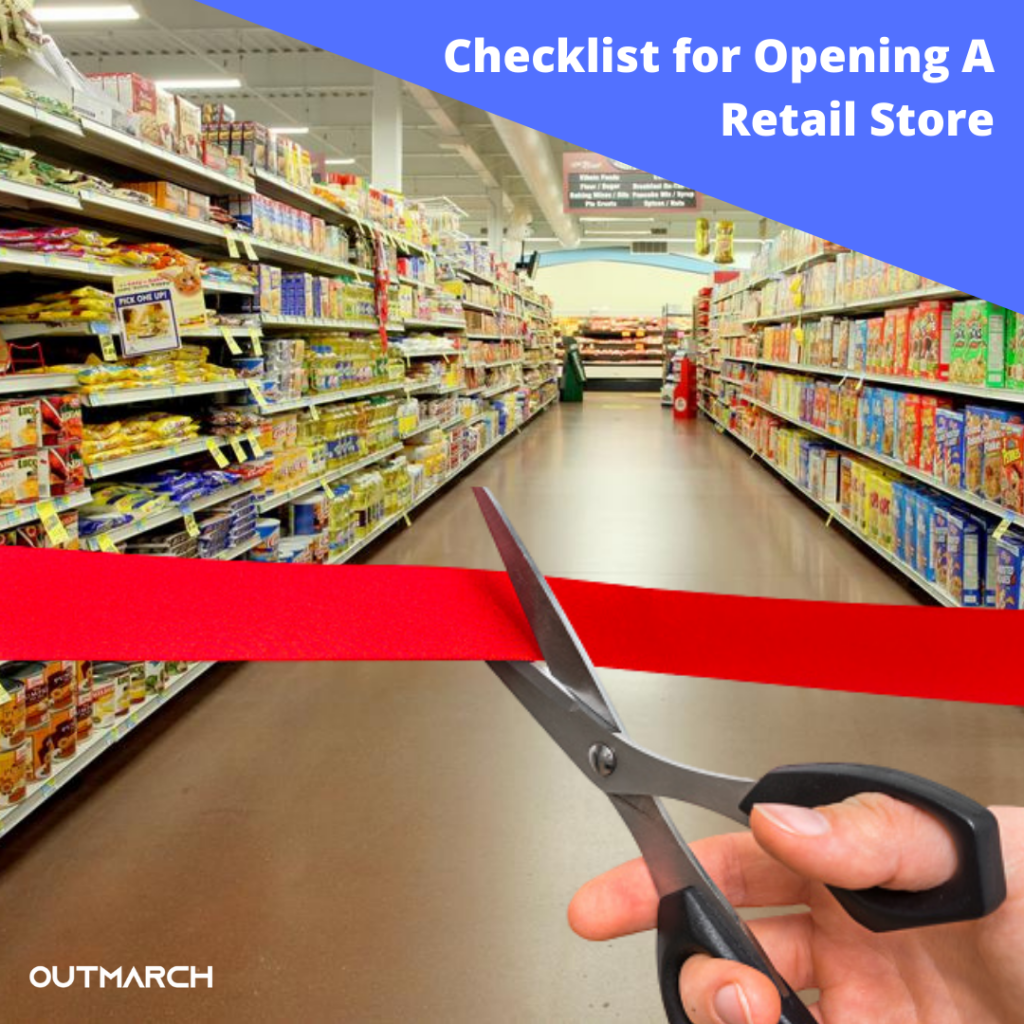Checklist for Opening A Retail Store

Overview
Classical retailing through the brick and mortar route has not perished. Even under the COVID-19 induced pandemic, retail giants like Walmart and Target have posted robust revenue. Opening up and owning a retail business can entail months of planning and coordination between the corporate scheme of things and the retail groundwork.
To open up a retail outlet, compliance with the following checklist can prove handy:
1. Observe the market:
Who is your target customer? An explicit answer to this must be a part of your initial marketing mix strategy where you must get the psychographic and demographic data on your desired marketplace and the tastes, preferences and behaviour of the consumers in that market. This can be done through surveys with questionnaires both offline and online.
2. Plan the layout:
According to the corporate directions execute the planogram related to the contours of the premise, design of the in-store merchandising, point of sales, colors, etc. Send it to the corporate office for approval.
3. Find the staff :
Based on the existing policy of the company, finding the appropriate staff at this stage will be important. Friendliness and a correct disposition should be the initial requirements of the in-store personnel besides the qualification and experience of retailing. Later, they can be trained in the further intricacies required.
4. Define your mission & vision:
At the outset, you must plan your retail venture based on what you want from your business, what your core values are, what your target market is, your concept of operational management, what your competitive advantage will be and how you plan to sustain and grow.
5. Zero-in on the location:
Choosing the correct location of your retail can be a make or, break parameter in the whole exercise. The correct location will give you an advantage whereas the wrong one can start damaging your retail business very quickly.
6. Plan the scenarios:
Since the retail store will be another addition to the existing chain, it will be important at this stage to layout the probable scenarios in the future. This will pertain to synchronizing the supply chain with the new location in terms of distance and cost. Besides, logistics related in-store management in terms of upkeep and record will also require attention.
7. Maintain a clear checklist of legal process:
This could consist of of multiple steps and could range from deciding on the nature of ownership to getting necessary compliance certificates. You must complete all the necessary permits and licensing requirements.
8. Financial planning:
Project your expenses based on the employees, stock levels, maintenance and other logistics. You can be innovative here by arranging for the transport of goods directly from the manufacturer to the store. It is a huge saving of cost and time. This way you can follow the cost-effective model in your retail business and take on your competitors head-on from the outset itself.
9. Decide on the appropriate tools:
- Cloud-based audit framework– Merchandising of the items in-store, keeping an inventory, ensuring effective point of sales methodologies, reporting mechanisms and workforce management are facets of the retail which must be automated in the modern prism of the business. You will do well to regulate all of these with a single cloud-based audit system that will take care of things in place and also recommend ways to get over things that require immediate attention.
- Opt for store efficiency tools – It will be prudent for you to regulate your in-store functioning, merchandising and inventory with a sophisticated retail management and/or, auditing software which can not not only maintain the records and prompt you on issues real time but it will also keep your employees focused on the key areas of customer management. A robust mechanism in this regard will enhance the communications between the corporate office.
- Automated accounting– Regulating all those sales, stocks and inventory figures can be perplexing and troubling. You need to decide on the best accounting software for your retail business. It will be one that will be connected to the point of sales and will upgrade the bookkeeping of the retail store in real-time. It will again save you a load of cost and time.
10. Marketing promotion:
Go through the entire checklist again and you are ready to greet customers in your brand-new retail.
Recent Posts
Archives
© Copyright 2024 - Outmarch. All rights reserved.
Recent Comments